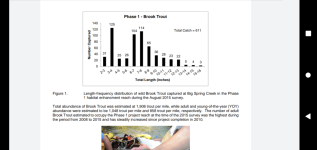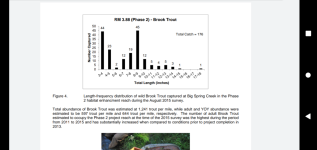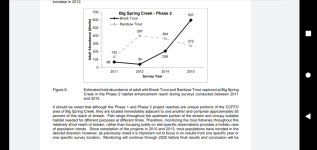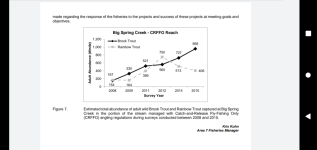sixfootfenwick
Well-known member
Amazing actually.👆what that guy said
It's plain to see brook trout responded to the hatchery closure alone.
The 2015 survey their population exploded even more after the project. it begs to question, has it been survey since 2015? I mean it is 2023. If so, where are the results
What can happen after a Hatchery that destroyed habitat is shutdown and the habitat restored.
I have no doubt if that hatchery was still running the brook trout would have been eventually wiped out. Likewise, had it been shutdown and the stream not restored, given 100's of years, it would have repaired itself. The restoration just sped up that process .
But where is the 2020 data????










